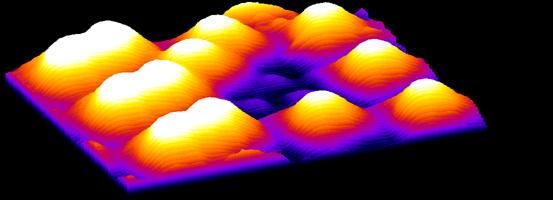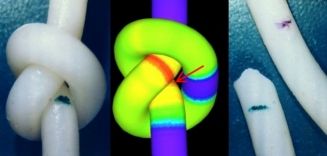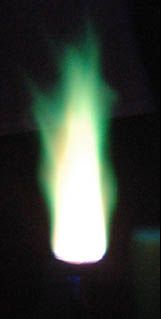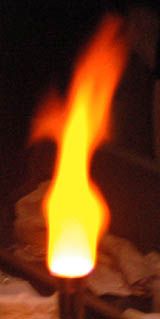|
|
|
|
< Entangling Catalysis > Cross-fertilisation of biochemical reactivity through “non- local” coherent operations in Q.communication Paolo Manzelli : pmanzelli@gmail.com ; www.gocreanet.it ;www.wbabin.net; www.edscuola.it/LRE.html,
The catalytic processes has a central role in all chemical and biochemical tranformation so that catalyst and enzymatic processes has a paramonut importance in the industrial production of chemical materials and it is extremely necessary to obtain a coordination of reactivity processes of bio-chemistry of life. I spite of this importance the “theory of catalysis” is very approximate and it is conceived in terms of the “Transition State Theory” , (1) expecially in order to interpret the enzyme specific activity in biological reactions. This theory remains limited to an old thermodynamic conceptions of transformations based on a continuous series of shifting equilibria, but evidently the catalysis is not an equlibium phenomenon. In this way of thinking , the catalysis theory, lack for defining a clear interpretation of the relatonships between the equilibrium and the out of equilibrium dynamics of transformation, where the catalysis show its proper activity. As a matter of facts the “Transition State” is an hybrid form of binding energy , that has not chances for an effective physical existence. Exerimentally catalysis correspond to an acceleration or decelleration of the rate of a reaction, brought through a catalyst (heterogeneous catalysis) (2) , or via an “auto-catalyst” activity (homogeneous catalysis). Both are evidencied in out of side of equilibrium conditions, and during the two types of catalytic actions the catalysator remains unaffected at the end of the reaction. (3),(4) The accelleration/decelleration of the rate of the reaction can be seen in two different modes : I°) by means of an activity able to lower the hill of energy, that impede the transformation from a reagent to a product , II°) by means of an growth of intensity of “chemical affinity” (3) able to select the path through the potential energy surface, in order to find a “quantum walk” in corrispondence to a less consuming energy. The (I°) mode of understanding catalysis, is normaly utilized as an explanation associated to the “molecular collisions”, prefered by the mechanical interpretation of chemical reactivity (5). The (II°) mode of understanding reneves the old concept of Jöns Jacob Berzelius (1779-1848) about the “chemical affinity” changes, during a reaction, and now it is revised in terms of “Quantum Entanlement” as a process where happen the mutual exchange of information as it is necessary to comprehend the quantum effects in the calalytic activity as an energy-saving process. It is useful to remember that “Chemical Affinity”, means; the selected tendency that elementary bodies have to combine and remain in combination. As a matter of facts it is well known that experimentally a compound can show a greater or a lower tendency to combine or not with another body. Following this ancient concept , J.J. Berzelius, described the catalysis as an “at distance effect” that change, the speed of a reaction , by means of the variation of the chemical affinity of the system with time. Differently the “Collision Theory” (5) forget the concept of “Chemical Affinity” to maitain the classic mechanical character of science in explaining how chemical reactions take place. The supposition is that for a reaction to occur, it is necessary that the reactant particles must collide; but only a probable fraction of the total collisions, causes an effective chemical change, these are called “successful collisions”; in fact they need to have sufficient energy (activation energy) at the moment of impact , in order to break the existing bonds and form new bonds, resulting in the products of the reaction. Therefore both, the increasing the concentration of the reactants and the raising the temperature, bring about more collisions, and therefore also more successful collisions, increasing the rate of reaction. When a catalyst undergoes collision with the reactant molecules, less activation energy is required for the chemical bonding changes, to take place, and hence more collisions have sufficient energy for reaction to occur. In this context of thinking about the “collision theory” of the chemical reactivity, the catalysis influences the reaction rate, this because increases or decreases the speed of the reaction , approaching a “Transition State” , in wich original bonds are weakened and new bonds are partially formed. This behaviour is considered approximatly valid also nearest to the stable condition of temperature and concentration of reactants. In the other conceptual appoach (II° mode) , based on “Chemical Affinity” ( Natural Attraction) , the development of the understanding of catalytic reactions can be made approaching the problem in “quantum physics”, especially starting from the photochemical reactions , so important for the “green-chemistry”. In this case the mechanical model of “collision among billiard balls”, need to be deply changed this because all quantum particles, before to get a collision, changes their single status in an “entanglement” mixed state. In fact the recent experimental evidence for “entangled mixed states” can be an useful method to understand the catalysis as a self organization, driven by the exhange of information in a way that, the original intuition of J.J. Berzelious can be better understand. The entanglement is generated by a cross-coupling of quantum Wave/Particles (W/P), that, just before the collision, permits us to re-model the mechanic conceptualization of the catalytic activity. In fact the discovery that transmission of information encoded into single quantum systems enables new forms of communication, let us to consider the emergence of the “information energy” domain in quantum communication. In a general approach of this quantum field, we remember that “entanglement” manifest itself by producing non-local correlation, between interactive events ,i.e. this correlations can’t be described by theories based solely on localised space/time variables. As far out as through “entanglement- pairs” of W/P , Information Energy (I) can be seen as a new kind of energy in a sense that (I) belongs to a more basic energy than those known as free vibrational Energy (E) , and Energy encoded like matter (M). ( 6 ) Now we
try to follow through the imagination the process of the “entangling
Quantum Path In this “ZPE” zone of the ground state of Energy , happen the transformation of entangled packet of Q. Energy into a superposition of four waves of pure “Information Energy”. The above mind experiment simplify in a visual immage the process of “entangling catalysis”, by means of a conversion of the entangled pairs in pure “Information Energy”, the last living in the lowest Q.Energy side i.e. below the limit of the “Uncertainty Horizon”. In fact when this turning “point-line” it is surpassed , the packets of energy associated to the entangled W/P, do not disappear , this because the Werner Heisemberg relation (1927), is not only a mathematical boundary of Quantum Mechanics, getting a calcultation of the simultaneously measurement of mechanical complemented variables as position and momentum, but the Heisemberg Principle, defines the effective “physical horizon” of quantum observability in the Euclidean Space-Time. As a conseguence when the “instable entaglement” collapse, near to the “zero point energy”,(7) the space-time configuration, living near to the ground state , change giving rise to a superposition of four pure waves of “Information Energy” (I) . The sum of the four sub-packets of (I) belongs as at the same Q.Energy of the previous Entangled Pairs. (8) . As a matter of facts , we need to admit that a residual motion will always remains also after the ”Hesimberg Horizon” as it is required by the the complete application of the Heisenberg' relationship, resulting in the existence of a “zero-point energy”. As a consequence at the “ZPE” field, belongs a great part of energy , that remains excluded, when all other measurable energy like (E) and (M) disappear from a system. So that this exclusion of Q.Energy, need to be considered as pure Information Energy (I), giving rise to a redefinition of the “Conservation of the Total Energy Principle”.(9). Now looking again to reneve the “theory of catalysis”, we would like to take into account that the mixed state of entanglement pairs of W/P, is a potentially resource of communication processing of information. Thinking in this way, we suppose that in the majority of molecular cases a direct transformation between two entangled states of molecules is not possible, but “entangling” method can be utilised to assist all the catalytic activity . Hence “Entanglement-assisted catalysis” becomes a possible mode of understanding the exchance of information in non equilibrium systems, in the presence of a superdense states of (I). (10) At this point it become important to remember , (from “Shannon Information theory)”, that chaos in a system decreases as the information increases,. In spite of this statement, till the “Quantum-Entanglement Theory”, is never be found, a physical meaning for the energy that is able to favour the compehension of the “IN-FORM-ACTION” of new molecules in a chemical transformation. Therefore today can be possible to rebuild the hystorically idea that considers “affinity” as the fundamental “at distance effect” , that causes the chemical catalytic reactions. Therefore the Catalysis theory can be revised, by means of considering the extraodinary “non-localised” properties of the Information Energy . Traditional energy is regarded only as the carrier of local information signals; in spite of this , “I”, is a new form of Energy, having the property of a surface non-localised energy. So that in relation to the catalytic effect s, (I) can be considered as a driving information energy to accellerate the reaction by means of finding the best energy-saving “quantum path “, in order to transform the chaos in a new molecular order, e.g. through avoiding the energy barriers during the bio-chemical transformations . The above correspond to an efficient method for getting a change in the redistribution of the electron density that modify the bond interactions and permits the chemical transformation of electron's density from reactants to products. The nobel Prise in Chemistry (1973) Ilya Prigogine firsly open the door to an reinterpretation of “chemical affinity as a distance effect” summarizing in the following statement the need to reintroduce the old conception of J.J. Berzelius , for unerstanding the “self organization” of chemical transformations in out side of equilibrium context. He said : <All chemical reactions drive the system to a state of equilibrium in which the affinities of the reactions vanish.>. In conclusion the collision theory , (that assumes the necessity of a physical contact among reacting molecules), need to day to be integrated with the oldest affinity theory of catalysis, starting from an appropriated revision of the peculiarly “non-local nature” of quantum correlations of an entangled assisted catalysis. Personally I consider this argument one of the mosti important field of research to “understanding life”.
|
La pagina
- Educazione&Scuola©





